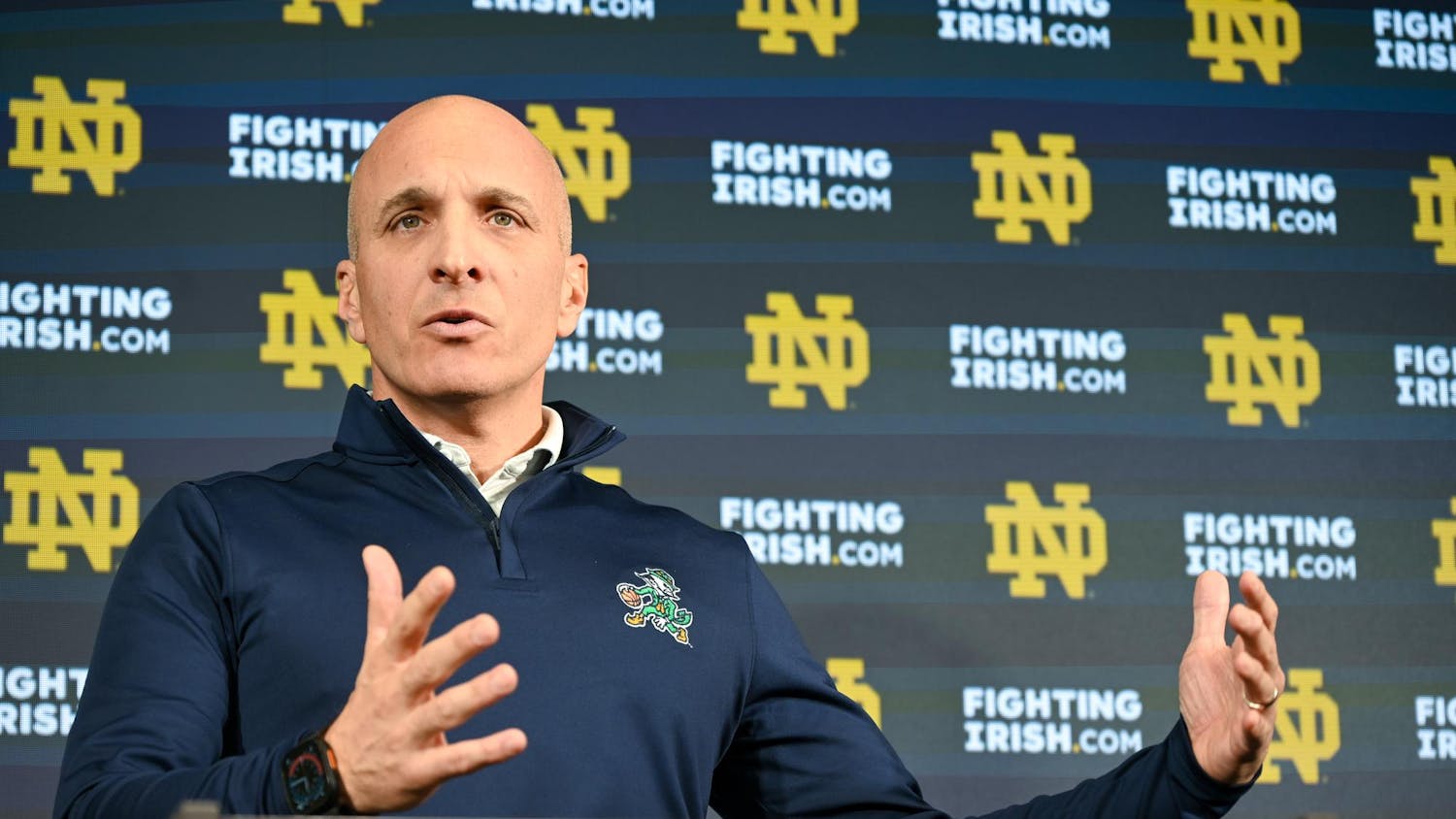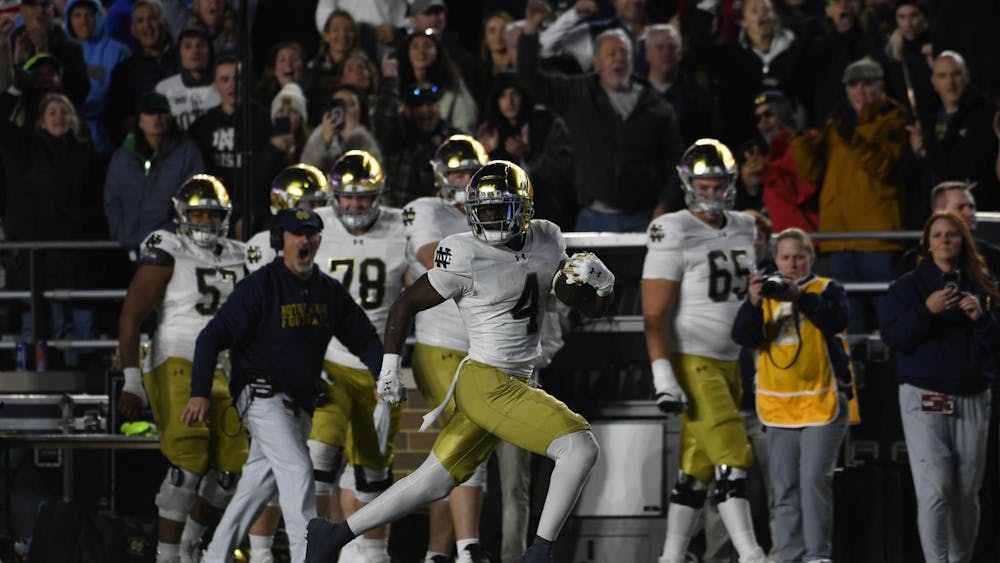Leather couches in front of huge television screens? Check. A barber shop in the players lounge? Check. Don’t forget the mini golf course.
Athletic constructions across the country have set the new standards of what it takes to own a competitive, top-tier college football program. Just take a look at our own school, which is building a new indoor facility, and not to mention Notre Dame Stadium’s facelift.
Practice facilities, professional-quality locker rooms and extravagant player lounges are standard, and the college athletics arms race shows few signs of slowing.
From the bold additions of video game lounges to the small details such as placing a door for the best flow from the field to the locker room, schools across the nation are pouring millions into football complexes.
College football is a multimillion-dollar business. As soon as a prospect walks through the front door, the recruiting pitch begins. College coaches hope young elite players buy with their eyes, drawn to the extraordinary amenities or the program’s glorified history on display.
At Clemson, a new, $55 million football facility was completed in 2017, according to the Business Insider. Forget football facility, try players’ theme park filled with a basketball court, mini golf course, a whiffle ball field, bowling lanes, arcades games and even a huge metal slide if one doesn’t want to take the stairs. Their 23,000-square-foot weight room outshines their opponents in the ACC, with an extravagant “fuel bar” stocked with necessities to recover after a workout.
At a school like Kentucky, which is not as well-known for their football program as Clemson, they poured $45 million into completing a new facility in 2016. Uniforms are on display with a “make-your-own-uniform” screen in front of them when one walks in.
Right now across the nation, if a team does not have a football-only facility, they are building one. If a team already has one, it wants to improve it.
The University of Georgia had a $63 million stadium upgrade before this season, including an upgraded locker room, new lounge for recruits, new scoreboard, restroom and concession renovations and an expanded upper plaza, showing just how luxurious college football facilities have become.
In the locker room, each player has a huge locker — backlit for extra drama — with his name, number and hometown etched above the Georgia “G.” These lockers mimic the ones in the Texas Longhorns’ locker room, which were renovated before last season, each locker costing $8,700 for its stainless steel, 37-inch television, anti-bacterial features, custom made racks and pin-pad safes.
About 110 miles away, in Evanston, Illinois, Northwestern’s football team received a new lakeside practice facility last spring. As the beautiful light filters through the wall of windows near the water, one may believe they are at a restaurant to wine and dine rather than train. The $270 million Ryan Fieldhouse project includes a virtual reality room allowing quarterbacks to watch 3D film and a massive weight room to hold all 110 players, according to the Chicago Tribune.
Northwestern will show off this example of college football excess to recruits for years, and it’s all just part of the business and considering the fantasies of their 18-year-old clients. With the price tags of all these new facilities, we are reminded the facilities race is a byproduct of all the money generated through college sports.
But as wealthy donors rush to send in checks to Alabama and Clemson so they might out-build the other, schools with fewer resources, such as Maryland, are financed with millions from the state government and mandatory student fees.
And at all schools whose fundraising efforts are turning into multimillion-dollar projects, they all fear one thing: that their upgrades will soon be out of date and they will fall behind their competitors. It’s a never-ending race to build and appeal to young athletes, and the trend shows there is no end in sight.
Read More
Trending








